|
|
|
Sort Order |
|
|
|
Items / Page
|
|
|
|
|
|
|
| Srl | Item |
| 1 |
ID:
161070
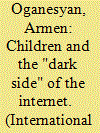

|
|
|
|
|
| Summary/Abstract |
TODAY, the international community devotes considerable attention to the political, military and economic aspects of cyber security. This is only natural. Disruption of critical infrastructure, cyber espionage, hacking attacks on big business and the banking sector - indeed, these are extremely acute problems now. However, let's talk about a no less important aspect of information security, its humanitarian dimension, specifically the security of children and teenagers on the Internet. There is a well-known expression: "Children are our future." There can be no sustainable development of the state or the international community as a whole unless children, as the most vulnerable social group, are provided appropriate protection and rights in cyberspace. It may be recalled that, according to expert estimates, every third Internet user in the world is under the age of 18. This is a substantial figure.
|
|
|
|
|
|
|
|
|
|
|
|
|
|
|
|
| 2 |
ID:
176648


|
|
|
|
|
| Summary/Abstract |
The incorporation of the Internet of Things (IoT) technologies enables products with new features, thus turning them into “smart products.” One of the opportunities presented by the literature for these applications is the development of household smart meters. In spite of this, few studies in this area seek to understand the most appropriate configurations of smart meters to meet customer needs. With this in mind, the objective of this work is to identify the most appropriate configuration for a smart household meter for electricity, water, and gas consumption, which adds value for a different household customer. Therefore, a market research based on Conjoint Analysis Based on Choice was carried out. The survey presents a sample of 202 respondents restricted to the metropolitan area of Florianópolis, in southern Brazil. The results indicate the relevance given by sample consumers to energy and water control, but no significant interest in controlling gas consumption. Consumers are also interested in using the mobile application to access information and tips on the consumption of monitored resources. Moreover, respondents in this region are less price sensitive. However, women and consumers of cheaper real estate are more willing to pay a higher price for a smart meter.
|
|
|
|
|
|
|
|
|
|
|
|
|
|
|
|
| 3 |
ID:
178329
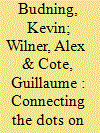

|
|
|
|
|
| Summary/Abstract |
A “connected battlespace” (CB) aims to leverage emerging technologies, such as low Earth orbit satellites, internet of things devices, cloud computing, and artificial intelligence, in order to collect, process, and disseminate large quantities of data in real time, thereby providing decision-makers with the ability to respond to threats faster and with more precision. Despite its promise, as a concept, a CB is still misunderstood, underdeveloped, and understudied. In an effort to fill this gap, this policy brief describes several key findings derived from an expert stakeholder workshop that the authors convened in July 2020. Workshop participants probed several questions about the development of Canada’s CB infrastructure, touching on a number of themes, including alliance partnerships, emerging technology, procurement, national security, and defence strategy. Our article synthesizes and analyzes key discussions held during this workshop.
|
|
|
|
|
|
|
|
|
|
|
|
|
|
|
|
| 4 |
ID:
160805
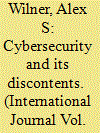

|
|
|
|
|
| Summary/Abstract |
The future of cybersecurity is in flux. Artificial intelligence challenges existing notions of security, human rights, and governance. Digital misinformation campaigns leverage fabrications and mistruths for political and geostrategic gain. And the Internet of Things—a digital landscape in which billions of wireless objects from smart fridges to smart cars are tethered together—provides new means to distribute and conduct cyberattacks. As technological developments alter the way we think about cybersecurity, they will likewise broaden the way governments and societies will have to learn to respond. This policy brief discusses the emerging landscape of cybersecurity in Canada and abroad, with the intent of informing public debate and discourse on emerging cyber challenges and opportunities.
|
|
|
|
|
|
|
|
|
|
|
|
|
|
|
|
| 5 |
ID:
151499
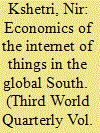

|
|
|
|
|
| Summary/Abstract |
While the Internet of Things (IoT) is not new, its key components are becoming increasingly affordable now, which makes the technology extremely attractive for the Global South. By collecting data from various IoT sources, combining them with data from other sources and using big data analytics, decisions can be made and actions can be taken that can have important economic, social, ecological and environmental implications in these countries. The most visible impacts of the IoT in these countries include improvements in agricultural and food systems, enhancement of environmental security and resource conservation, achievement of better healthcare, public health and medicine, and enhancement of the efficiency of key industries. This paper provides an overview of how the IoT is currently being used in the Global South. It also discusses the opportunities and challenges that IoT initiatives present there. The analysis indicates that the IoT may address some of the institutional bottlenecks, technological challenges and key sources of high transaction costs. On the other hand, various sources of underdevelopment may act as barriers to full utilisation of the IoT.
|
|
|
|
|
|
|
|
|
|
|
|
|
|
|
|
| 6 |
ID:
144197


|
|
|
|
|
| Summary/Abstract |
This paper considers how existing concepts underlying the development of the Internet are being strained in the emerging Internet of Things (IoT). It also explores how the well-known and tried Domain Name Service concepts, which map hierarchic names to addresses, can be extended for the IoT. The extension greatly broadens the concept of name/address mapping to digital objects with identifier/attribute database mapping for physical objects, applications, and data. Finally, this essay discusses the properties of the identifier management systems, showing how scalability, security, and flexibility can be supported in the IoT.
|
|
|
|
|
|
|
|
|
|
|
|
|
|
|
|
| 7 |
ID:
163871
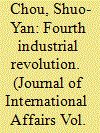

|
|
|
| 8 |
ID:
166052
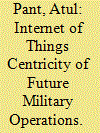

|
|
|
|
|
| Summary/Abstract |
Since the last decade of the twentieth century, network centricity has profoundly transformed warfighting and the outlook of the military. The next level of the networking ladder is Internet of Things (IoT), which has already started to disruptively change the ways in the civil domain, bringing a considerable autonomy to various processes by linking of a plethora of smart devices that are talking to each other. Militaries, in the near future, are also likely to see similar proliferation of IoT, which will bring a material change to their functioning and conduct of operations. This article analyses various facets and makes assessment of the IoT centricity of future military operations based on the IoT concept, IoT-led future shaping of the things, challenges and developmental trajectories of major powers.
|
|
|
|
|
|
|
|
|
|
|
|
|
|
|
|
| 9 |
ID:
168100
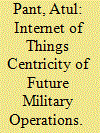

|
|
|
|
|
| Summary/Abstract |
Since the last decade of the twentieth century, network centricity has profoundly transformed warfighting and the outlook of the military. The next level of the networking ladder is Internet of Things (IoT), which has already started to disruptively change the ways in the civil domain, bringing a considerable autonomy to various processes by linking of a plethora of smart devices that are talking to each other. Militaries, in the near future, are also likely to see similar proliferation of IoT, which will bring a material change to their functioning and conduct of operations. This article analyses various facets and makes assessment of the IoT centricity of future military operations based on the IoT concept, IoT-led future shaping of the things, challenges and developmental trajectories of major powers.
|
|
|
|
|
|
|
|
|
|
|
|
|
|
|
|
| 10 |
ID:
175171
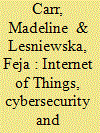

|
|
|
|
|
| Summary/Abstract |
The implementation of the Internet of Things (IoT) is central to what the World Economic Forum has coined the ‘Fourth Industrial Revolution’; a technological revolution built upon cyber-physical systems that will blur the lines between the physical, digital and biological spheres. Novel interconnections will emerge as a result, challenging traditional relations and modes of governance. However, a central feature of the IoT is that the implications of cyber (in)security are no longer abstract. The IoT also returns us to the world of kinetic effects in international relations; more familiar territory for IR. The resulting cooperation and coordination challenges are transboundary in nature, occur at multiple levels across sectors, between institutions, and will impact all actors, both public and private, in complex, often highly politicised ways. In this article we argue that advances in global climate governance appear to be offering an early model of a consensual rules-based approach within the existing international order that provides space for advancing agility, flexibility, and polycentrism to meet the demands of ‘wicked problems’ like the cybersecurity of the IoT. Perhaps one of the most important lessons to be drawn across from climate governance is the role of robust mechanisms for knowledge exchange – specifically between the technical and policy communities.
|
|
|
|
|
|
|
|
|
|
|
|
|
|
|
|
|
|
|
|
|